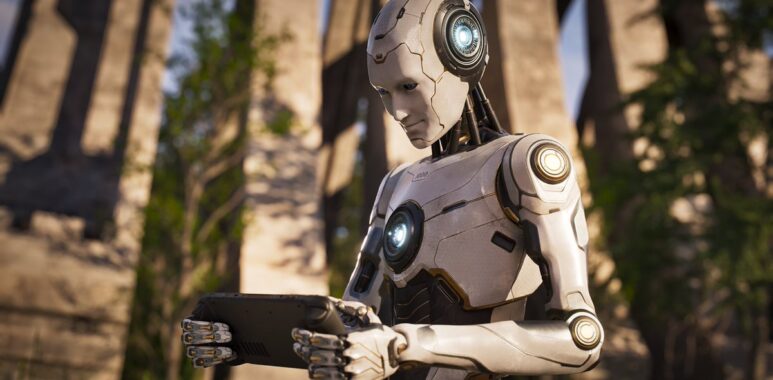
The Talos Principle 2: A progression of puzzles and concepts
The Talos Principle 2 is concerned not just with the potential of the end of the world, but also with a genuine, valid, rational dread of it–one founded not on theological abstraction or remote projection, but on a knowledge of previous mistakes. It avoids the prospect of a fun environment with creatures to blast or a villain to hunt, instead focusing on a more quiet and serene depiction of approaching catastrophe. It questions how to best prevent the world from coming to an end of our own creation, even if it is still speculative or decades away. When is it worth the risk? What ideals, comforts, and qualities of ourselves are vital to us, and which of them are so basic that life would be meaningless without them?

Thus, it seems sense that The Talos Principle 2 opens with you dreaming. The soundtrack from the first game greets us as we wake up, our mechanical hand shades the sun while we gaze up at the sky, and the voice of Elohim, who was one of our few means of communication in the first game, sounds more like an old friend who comforts us today.

Stepping into the chassis of an artificial intellect trapped inside a virtual reality simulation, players were directed around the digital setting by the soothing yet dictatorial voice of ELOHIM, a conflicted and sometimes beneficent enemy who must be defeated. Puzzle mechanics involved directing light beams into the proper receptors to open doors and control equipment within sophisticated, isolated puzzle boxes replete with obstacles.

The Talos Principle 2 takes place hundreds of years in the future. After mankind is wiped out by a plague, Athena, the original game’s main character, has founded New Jerusalem, a city populated by robots that believe themselves human. This city and its residents are motivated by what everyone refers to as The Goal: to create a perfectly balanced society of 1000 people, free of the thirst for limitless expansion that has previously destroyed civilization. You are number 1000, often known as 1k, and with your birth, The Goal has been met. However, not everyone appears to agree on how to go following this.

The Talos Principle was a puzzle game that also addressed philosophical problems regarding existence. Except for infrequent exchanges with terminals that offered insight into where you are and maybe who you are, you felt rather alone in the beginning. The Talos Principle 2 takes it a step further, transporting you to a metropolis full of other androids. A civilization has been established, as has a city called New Jerusalem, which is designed to be superior to what has come before. However, the festivities are disrupted by a mysterious man who appears and tells of something beyond the city gates. A small group is assigned to investigate, and you are among them.
The sensation of loneliness has been replaced with communication with your teammates, giving the entire experience a totally different vibe. You no longer feel alone in a lifeless world; instead, you feel like you’re part of a civilization working towards common goals like figuring out who designed these riddles and why.

Some of the mechanics from the first game have returned, such as connecting light beams and jamming doors to gain access to areas, but they have been supplemented by a plethora of new techniques, such as magic hole-making machines, on-demand clones, and RGB converters that take in two lights of red, green, and blue and emit the third colour. Only a limited number of these mechanics are employed at any given moment, so while puzzles become more complicated, they are never impenetrable. Like in the original game, you can seek assistance from an outside source. In the first game, it was discovering the messengers’ resting spot; in this game, it is finding Prometheus’ sparks.
For those who considered the original game’s simulation-bound settings too restrictive, Croteam has created a new universe of natural splendour this time around. Your aeroplane arrives in front of a majestic metal pyramid known as the Megastructure, and the twelve hub regions along its perimeter range from lush woods to desert oasis and alpine tundra, all with a degree of topographical sculpting that much exceeds that of the original game.

The Talos Principle 2 is ambitious and far broader in scope, both literally and metaphorically. The maps are bigger and include breathtaking landscapes packed with impossible architecture and intriguing monuments. They may be breathtaking to explore, and each puzzle seems distinct, almost if each individual area has its own personality. The problems also seem more focused and less boring. The recorder mechanics and the need to dodge explosions with split-second timing have been replaced by more superior technology that lead to more inventive solutions.challenges are never dull, and each of the 12 core worlds seems unique, not only physically but also in terms of the sorts of challenges introduced.
Overall, The Talos Principle 2 is everything the previous game was, but with a lot more emphasis on the story and universe. The Talos Principle 2 is a stunning, well produced experience. It will appeal to both lovers of difficult puzzlers and those searching for a plot that will make them consider serious, philosophical issues.

